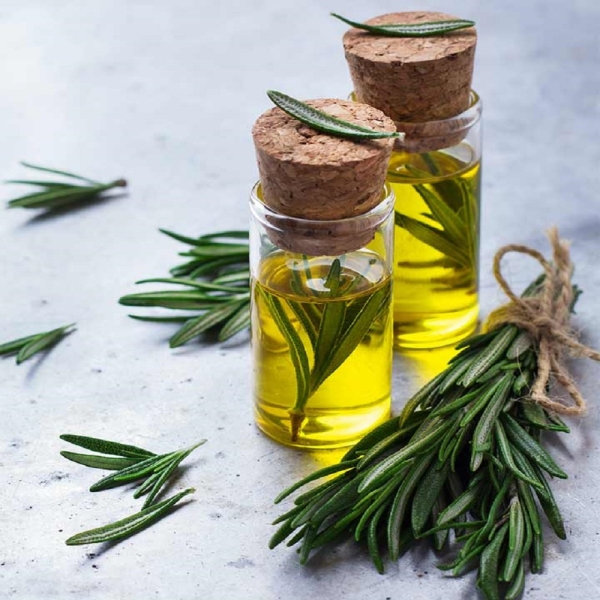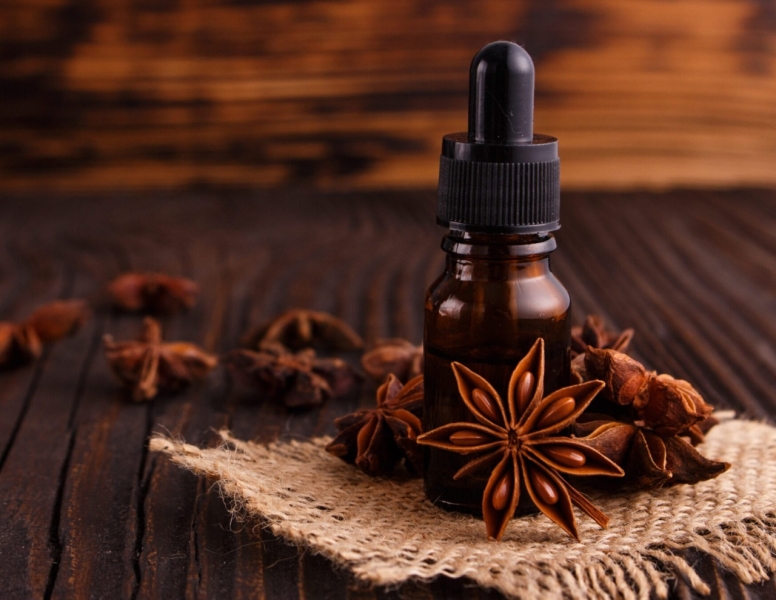Cinnamon Bark Oil
The dried inner bark of the Cinnamomum zeylanicum tree, also recognized as true cinnamon, yields a highly esteemed essential oil: cinnamon bark oil. Renowned for its warm--sweet yet spicy--fragrance; this versatile substance boasts an extensive historical narrative and finds widespread application in industries such as food production, fragrance development, cosmetics manufacturing – even aromatherapy. This article delves into the origins of cinnamon bark oil; its extraction process; an analysis of its aroma profile; therapeutic benefits--and offers practical suggestions for incorporating it into daily life.
Why Choose NOREX ?
Several reasons distinguish NOREX, compelling it as a choice for various needs; let's underscore these key points to illuminate the rationale behind selecting NOREX:
Expertise and Experience
NOREX's team comprises seasoned professionals who bring a wealth of industry experience; this expertise directly translates into the delivery of reliable, high-quality service.
Innovative Solutions
NOREX: steadfastly dedicated to innovation--it persistently formulates and implements cutting-edge solutions that harmonize with the dynamic needs of its clients. This unwavering commitment ensures our clients have unfettered access to the latest and most effective technologies; moreover, it never fails a customer – this is why NOREX stands as an unparalleled leader in its industry.
Customer-Centric Approach
NOREX prioritizes its clients, tailoring services to meet their individual needs; the company's approach remains customer-centric. This strategy ensures personalized attention for each client: a key element in delivering solutions that align precisely with distinct requirements.
Quality Assurance
NOREX, through its stringent quality standards, guarantees the delivery of top-notch products and services; this commitment to excellence instills unshakeable confidence in clients. Consequently – within the market – NOREX stands out: a benchmark for uncompromising quality; an entity that leaves no room for mediocrity or compromise.
Reliability and Trust
NOREX, renowned for its reliability and trustworthiness, consistently delivers on promises; these foster long-term partnerships rooted in trust--an integral aspect of their operations.
Cost-Effectiveness
NOREX: an enticing choice for businesses aiming to optimize their investments--offers solutions that remain cost-effective, yet never compromise on quality.
Extraction Process of Cinnamon Bark Oil
We acquire cinnamon bark oil using a variety of extraction methods, with steam distillation and Soxhlet extraction - the most common. Specifically in the process of steam distillation: passing steam over dried and crushed cinnamon bark releases volatile oil, which then condenses into separate entities—oil and water. Conversely, through Soxhlet extraction, we dissolve the oil from cinnamon bark using organic solvents — upon evaporating this solvent, pure oil remains. Steam distillation, while more prevalent and less complex than Soxhlet extraction - yields comparatively lower quantities of oil. Yet, the quality may fluctuate it hinges on factors such as the solvent employed; furthermore, it is contingent upon varying extraction conditions.
Quality sourcing critically determines the attainment of pure and potent cinnamon bark oil: species, origin, cultivation practices - such as harvesting and drying methods – along with storage conditions directly influence the quality of this precious commodity. Ceylon cinnamon or Cinnamomum zeylanicum emerges as a favored species; it features an elevated trans-cinnamaldehyde concentration combined with low coumarin content–a perfect balance. The manifold factors that contribute to its excellence include everything from growth location to harvesting techniques used--there is absolutely no room for compromise in the pursuit of premium-grade cinnamon bark oil. Sri Lanka indeed garners a reputation for producing high-quality cinnamon, as do other countries such as Madagascar and India. The freshness and efficacy of the oil hinge upon three crucial factors: exemplary agricultural practices; appropriate methods for drying; and meticulous storage techniques.
Aroma Profile of Cinnamon Bark Oil
The distinct and powerful aroma of cinnamon bark oil emanates from a liquid: it can be anywhere between pale yellow and dark brownish-yellow, with warmth--spiciness intertwined in its scent that leans towards sweetness. Notably, this tenacious fragrance reveals an intriguing twist upon drying out—notably presenting a unique juxtaposition of both dryness and sweetness. Detect a fruity freshness in the top notes, evocative of sweet candy; simultaneously, experience an intensely potent flavor--several times stronger than lower grade oils--in cinnamon bark oil: it embodies a remarkably robust and spicy taste. In perfumery and flavors alike, its popularity is attributed to its warm, enticingly aromatic fragrance.
Industrial Applications of Cinnamon Bark Oil
Cinnamon bark oil finds diverse industrial applications, including in cosmetics, beverages, and other industries, owing to its beneficial properties. Here are some specific industrial applications of cinnamon bark oil:
Cosmetics
Essential oils derived from cinnamon extracts are increasingly utilized in the cosmetics industry. Cinnamon oil is known to inhibit degradation of cosmetic products when exposed to common bacteria found in humans. Its preservative properties are beneficial to produce natural and organic cosmetic products. Moreover, cinnamon has potential applications in creating active packaging solutions for cosmetic products, and in the production of cosmetic creams and lotions.
Pharmaceuticals
Cinnamon oils are recognized as a key source for making traditional medicines in Asian countries such as Sri Lanka and China. The chemical composition of cinnamon exhibits the presence of polyphenols and volatile phenols, essential for pharmaceutical production. Cinnamon bark extracts containing PLGA, a biocompatible polymer, are used in the production of antimicrobial compounds for pharmaceutical applications, including in the production of antibacterial medicines. Cinnamon bark oil is also used in pain relief balm and DFO gels by mixing it with other oils, such as eucalyptus, peppermint, or clove oil.
Oral Care
Cinnamon bark oil has antibacterial, antifungal, and anti-inflammatory properties that can help prevent and treat oral infections, such as gingivitis, tooth decay, and bad breath1. It can also stimulate the salivary glands and enhance the flavor of oral care products, such as toothpaste, mouthwash, and chewing gum2. According to one study, cinnamon bark oil was found to be effective against Streptococcus mutans, the main cause of dental caries, at a concentration of 0.5%.
Fine Fragrances
Cinnamon bark oil is a popular ingredient in fine fragrances, especially in oriental, spicy, and woody perfumes4. It can add warmth, richness, and complexity to the fragrance composition, as well as enhance the longevity and diffusion of the scent. Cinnamon bark oil can also blend well with other essential oils, such as clove, orange, vanilla, and rose. Some examples of fine fragrances that contain cinnamon bark oil are [Obsession by Calvin Klein], [Opium by Yves Saint Laurent], and [Cinnabar by Estee Lauder].
Tea Application:
Cinnamon bark oil can also be used as a flavoring agent in tea, either alone or in combination with other spices, such as ginger, cardamom, and black pepper. Cinnamon bark oil can enhance the taste and aroma of the tea, as well as provide health benefits, such as lowering blood sugar, cholesterol, and blood pressure, improving digestion, and boosting immunity. Cinnamon bark oil can be added to tea in small amounts, usually a few drops per cup, depending on the preference and tolerance of the consumer.
Therapeutic Benefits of Cinnamon Bark Oil
Various therapeutic properties and benefits stem from the utilization of cinnamon bark oil. With its warming, comforting characteristics in mind; it becomes an ideal tool for creating a cozy atmosphere. Particularly in aromatherapy: use of cinnamon bark oil can bolster the immune system--promote relaxation and uplift mood. Cinnamon bark oil's purifying and antimicrobial properties render it an invaluable augmentation to natural cleaning products; in skincare usage, this same oil cleanses and tones the skin--promoting a smooth complexion. Furthermore, its application enhances hair health: indeed, its believed effects include both antioxidant and anti-inflammatory aspects.
Promoting a Cozy Atmosphere
The popularity of using Cinnamon Bark Oil to create a warm and inviting atmosphere is undeniable; its rich, spicy fragrance invokes not only comfort but also nostalgia. For those seeking to foster an even more cozy environment: simply incorporate a few drops of this potent oil into your diffuser—or, for an alternative approach—combine it with water in a spray bottle – thus unleashing homemade room spray that truly encapsulates all things 'cozy’. Utilize cinnamon bark oil to craft scented candles or potpourri; the result: an enchanting fragrance that permeates your entire home.
Supporting Immunity
The antimicrobial properties of cinnamon bark oil can bolster the immune system. By diffusing this oil in your living spaces, you purify the air and reduce airborne bacteria and viruses. Combine it with a carrier oil like jojoba or almond to produce an all-natural hand sanitizer. Rub a small amount onto your hands and invigorate the skin while combatting germs.
Enhancing Mood
Cinnamon bark oil's warm and spicy aroma can positively influence mood and emotions; its comforting scent may mitigate stress, anxiety, as well as fatigue: for an enhanced mood--consider incorporating cinnamon bark oil into a relaxing bath. Add a few drops of the oil to your chosen carrier oil - coconut or jojoba, for instance; then put this mixture into your bathwater. Take pleasure in an invigorating soak that will not only relax you but also elevate your mood.
Cinnamon Bark Oil in Aromatherapy
Utilizing the therapeutic properties of essential oils for physical and emotional well-being, aromatherapy employs a holistic approach. In particular, incorporating cinnamon bark oil into aromatherapy routines enhances relaxation, promotes mental clarity--and creates an atmosphere that is both warm and inviting. The following methods outline how one may effectively use cinnamon bark oil in this context:
Diffusion
Fill a diffuser with water, then add several drops of cinnamon bark oil. Afterward, turn on the diffuser to allow the room's atmosphere to fill with its warm and spicy aroma; this method not only creates a cozy atmosphere but also promotes relaxation and uplifts mood. You can also combine it with other essential oils - sweet orange or lavender, for instance - to create a delightful blend of complementary scents.
Inhalation
Another effective method for reaping the benefits of cinnamon bark oil is through inhalation: simply add a drop or two of the oil to either a tissue--preferably cotton ball--and inhale deeply. The aroma emanating from this action not only clears your mind; it also stimulates mental energy while enhancing focus, concentration indeed - an invigorating experience overall. Especially useful during periods of stress or when an additional surge of energy is required: this has its benefits.
Comforting Blends
A variety of other essential oils blend harmoniously with cinnamon bark oil, enabling you to craft personalized aromatherapy blends. To fashion a comforting blend: amalgamate the cinnamon bark oil; sweet orange--clove bud and vanilla essential oils. This concoction—by inducing relaxation, fostering an inviting atmosphere—and promotes overall well-being; it can serve as your gateway into warmth and comfort.
Skincare and Body Care with Cinnamon Bark Oil
Cinnamon bark oil: a potent ally in skincare and body care routines-- offers manifold benefits. With its astringent properties, it not only cleanses but also tones the skin due to its antimicrobial nature. Further enhancing these effects, this versatile oil promotes an even complexion promoting smoothness while reducing blemish visibility on one hand and improving hair health on the other. Incorporate cinnamon bark oil into your skincare and body care routine using the following methods:
Warming Massage Blends
Add cinnamon bark oil to carrier oils like jojoba or almond oil; this creates a warming massage blend. The resulting sensation--warm and comforting--soothes sore muscles, eases discomfort, and promotes relaxation: an ideal remedy for those seeking relief after strenuous activity. Simply mix a few drops of cinnamon bark oil with your chosen carrier; then, apply the solution gently–but firmly–to desired areas on your body in circular motions – yielding not only immediate relief but also heightened feelings of tranquility throughout the process. Enjoy the comforting and invigorating effects of the massage blend.
DIY Beauty Recipes
Enhance your skincare routine by creating your own DIY beauty recipes with cinnamon bark oil. Combine the oil, honey, and brown sugar for a homemade facial scrub; then massage this mixture onto your face in gentle circular motions to promote a radiant complexion through exfoliation. For enhanced nourishment and a delightful fragrance, consider incorporating a drop of cinnamon bark oil into your moisturizer or face cream.
Foot Care
Especially during the colder months, utilizing cinnamon bark oil for foot care can prove advantageous. The warming properties of this oil provide soothing relief to weary and achy feet: simply incorporate a few drops into your warm water-filled foot bath, then immerse your feet in it - an ideal practice time is between fifteen to twenty minutes. By combining cinnamon bark oil with sea salt and carrier oil, you can create a foot scrub. Massage this scrub onto your feet gently for exfoliation and moisturization.
Cinnamon Bark Oil for Culinary Delights
For its warm and spicy flavor, culinary applications widely use cinnamon bark oil; it imparts a delightful touch to an array of dishes, desserts--even beverages. The intensity in taste remains intact even when sparingly used: this is due to the concentrated nature of cinnamon bark oil. Here are some ways to incorporate cinnamon bark oil into your culinary creations:
Baking and Cooking
Infuse baked goods, such as cookies, cakes, and bread with the warm and spicy flavor of cinnamon bark oil by adding a drop or two; this is usually sufficient to enhance the taste of the entire recipe. Moreover - in savory dishes like curries, stews, and marinades - you can utilize cinnamon bark oil for its ability to contribute depth and complexity to flavors.
Beverages
Elevate the flavor of diverse beverages with cinnamon bark oil: simply infuse your morning coffee or tea by adding a single drop. Further, combine this potent spice – cinnamon bark oil – with sugar and water to create delectable, flavored syrups. Sweeten and flavor your preferred beverages--hot chocolate or cocktails, for instance--with the syrup.
Culinary Industrial Applications
The culinary industry widely employs cinnamon bark oil for its intense flavor, extending beyond its use in home cooking. Flavored syrups, sauces, and spice blends commonly feature this oil. Moreover, producers utilize it in confectionery manufacturing such as candies, chocolates and chewing gum. The warm and spicy notes of this element: they infuse a wide range of culinary delights with depth and richness.
Alternatives for Culinary Warmth:
Instead of venturing into potentially risky territory with pure oil, here are safe and effective ways to add warmth to your recipes:
Ground Cinnamon: Your classic friend! Use ground cinnamon generously in baked goods, desserts, curries, stews, or sprinkle it over oatmeal and fruit. Start with small amounts and adjust to your taste.
Cinnamon Sticks: Whole cinnamon sticks infuse delicate warmth into simmering broths, soups, and sauces. Remove them before serving.
Infused Oils or Syrups: Make your own infused oils (olive oil with cinnamon sticks) or syrups (sugar water simmered with cinnamon sticks) for drizzling over dishes or cocktails.
Other Warming Spices: Explore the warm notes of nutmeg, ginger, cardamom, cloves, star anise, chili powder, paprika, turmeric, and cayenne pepper. Experiment with combinations to create unique flavor profiles.
Additional Tips:
- Toast spices: This releases their volatile oils for richer aroma and flavor.
- Caramelize sugar or vegetables: Adds warm, complex sweetness.
- Use fresh herbs: Thyme, rosemary, sage, bay leaves, and oregano bring warmth and depth.
- Roast vegetables: Enhances natural sweetness and warmth.
- Consider color: opt for ingredients like saffron, turmeric, or paprika for visually and flavorfully warm dishes.
By choosing these safe and delicious alternatives, you can add a touch of warmth to your culinary creations without compromising safety or taste. Remember, moderation is key – start with small amounts and adjust to your preferences.
Quality Assurance and Purity Standards
NOREX: prioritizes the quality and purity of our cinnamon bark oil; we rigorously adhere to stringent quality control measures--a guarantee that our products meet the highest standards. Following are several certifications and standards we fervently abide by:
- Our production processes and quality management systems meet international standards, as ISO 9001:2015 certification guarantees.
- The ISO 22000:2005 certification serves as confirmation of our implementation of food safety management systems, guaranteeing the safety and quality standards upheld in all our products.
- The World Health Organization recommends Good Manufacturing Practices, which we at GMP follow diligently to safeguard the quality and safety of our products.
- Our use of the cinnamon bark oil in pharmaceutical and dental preparations hinges on the essential COPP (Certificate of Pharmaceutical Product) certification; this ensures our compliance with regulatory requirements.
- Our commitment to delivering pure and reliable cinnamon bark oil underpins these certifications.
Safe Usage and Dilution Guidelines
- Follow safe usage and dilution guidelines when utilizing cinnamon bark oil; indeed, exercise caution as essential oils boast high concentrations. Keep these general guidelines in mind:
- Before applying cinnamon bark oil to the skin, you must always dilute it. Mix a few drops of this oil with a carrier like coconut or jojoba before using.
- Before topically using cinnamon bark oil, you must conduct a patch test: apply the diluted solution to a small area of your skin. Then--wait for any potential adverse reactions.
- Carefully circumvent direct application of undiluted cinnamon bark oil to the skin; this act may incite skin irritation or sensitization.
- Keep cinnamon bark oil out of reach of children and pets.
- Consult with a healthcare professional before using cinnamon bark oil if you possess any underlying health conditions, or if you are pregnant or breastfeeding.
By following these guidelines, you can safely enjoy the benefits of cinnamon bark oil
Incorporating Cinnamon Bark Oil into Daily Life
To infuse your daily life with the warm and spicy fragrance of cinnamon bark oil, consider these practical ideas:
Room Sprays
Combine cinnamon bark oil with water in a spray bottle to create your personal room spray. Shake the mixture vigorously, then spritz it throughout your living spaces; this will infuse an inviting and cozy atmosphere. For a delightful blend of scents, consider adding other essential oils such as sweet orange or clove.
DIY Potpourri
Infuse your home with the warm, spicy fragrance of cinnamon bark oil by crafting your own potpourri. In a bowl, combine an array of dried flowers, herbs and spices; then enhance this mixture with several drops of the aforementioned oil. Thoroughly mix everything before elegantly placing the potpourri in either decorative jars or bowls strategically scattered around your residence. Refresh the scent by adding more cinnamon bark oil as needed.
Enhancing Self-Care Rituals
Infuse your self-care rituals with the warm and relaxing essence of cinnamon bark oil: simply add a few drops to your bathwater for an aromatic, soothing bath. Alternatively--mixing it with carrier oil--you can create a massage that emanates warmth. Gently massage the oil onto your skin to promote relaxation and relieve tension. The warm and spicy fragrance of cinnamon bark oil can elevate your daily experiences, fostering a cozy and inviting ambiance.
Frequently Asked Questions (FAQs) about Cinnamon Bark Oil
Q1. What are the key industrial applications of cinnamon bark oil?
In the realm of Food & Beverage, it serves as a natural flavoring agent in candies; baked goods and beverages--both sweet and savory.
Cleaning solutions, soaps, and personal care products harness the antibacterial and antifungal properties of Pharmaceuticals & Cosmetics.
Agriculture: Potential use as a natural pesticide and fungicide.
In textiles and other materials, antimicrobial properties have the potential to suppress odor and mold growth.
Paints & Coatings: Natural preservative and potential insect repellent in coatings.
Q2. What are the sourcing and quality considerations for industrial use?
Origin & Type: Ceylon cinnamon oil - though less readily available and more expensive than its counterpart, Cassia bark oil - presents a milder, sweeter profile.
Ensure consistent quality and safety through the use of reputable suppliers and certifications such as USDA Organic or cGMP, this guarantees purity.
Bulk Pricing & Contracts: Negotiate long-term contracts for stable pricing and consistent supply.
Q3. What regulations and legal considerations govern the utilization of cinnamon bark oil in products?
Comprehend the regulations pertaining to food and cosmetic applications, such as the Generally Recognized as Safe (GRAS) status: this is a key component of understanding FDA compliance.
Complying with EU regulations and harnessing potential global market reach: these are the critical imperatives for achieving international standards.
Ensure the accuracy and compliance of claims about the oil's properties with regulations: Labeling & Marketing Claims.
Q4. How can I ensure the sustainability of my cinnamon bark oil supply chain?
Seek out certifications such as Fair Trade or Rainforest Alliance: they guarantee that your sourcing originates from farms committed to ethical and sustainable practices.
Choose suppliers that minimize environmental impact and guarantee fair labor conditions to support responsible harvesting practices.
Explore alternative sources: Consider sources beyond traditional cinnamon-growing regions to diversify your supply chain.
Q5. Using cinnamon bark oil industrially presents potential challenges and risks. What might these be?
Price fluctuations: Supply and demand can impact pricing, potentially affecting production costs.
Regulatory changes: Staying updated on evolving regulations is crucial to avoid compliance issues.
Potential allergic reactions: Consider consumer safety and product warnings for sensitive individuals.
Q6. How can I differentiate my products using cinnamon bark oil?
Focus on unique applications: Explore underutilized areas where cinnamon bark oil can offer value.
Combine with other natural ingredients: Create synergistic blends with complementary properties.
Highlight sustainability and ethical sourcing: Appeal to consumers seeking responsible products.
Q7. What resources are available for industrial entrepreneurs interested in cinnamon bark oil?
Join relevant organizations, such as the National Spice & Extract Association (NSEA) for industry updates and networking: these are your trade associations.
Research publications: Consult scientific journals and industry reports for technical information and market trends.
Essential oil suppliers: Partner with reputable suppliers who offer expert guidance and technical support.
Q8. What market trends and opportunities currently exist for cinnamon bark oil across various industries?
Growing demand for natural ingredients: Consumers seek alternatives to synthetic ingredients, creating opportunities.
Focus on clean label and sustainability: Products aligned with these values are increasingly popular.
Emerging applications: Explore potential uses in sectors like bioplastics or green solvents.
Q9. How can I engage in networking with other entrepreneurs and experts within the cinnamon bark oil industry?
Attending industry trade shows and conferences: Connect with suppliers, manufacturers, and other stakeholders.
Join online forums and communities: Engage in discussions and exchange knowledge with industry professionals.
Seek mentorship from experienced entrepreneurs: Learn from their successes and challenges.
| Botanical Name | Cinnamomum Zeylanicum |
| Origin | Sri Lanka |
| CAS No | 8015-91-6 |
| EINECS | 283-479-0 |

















